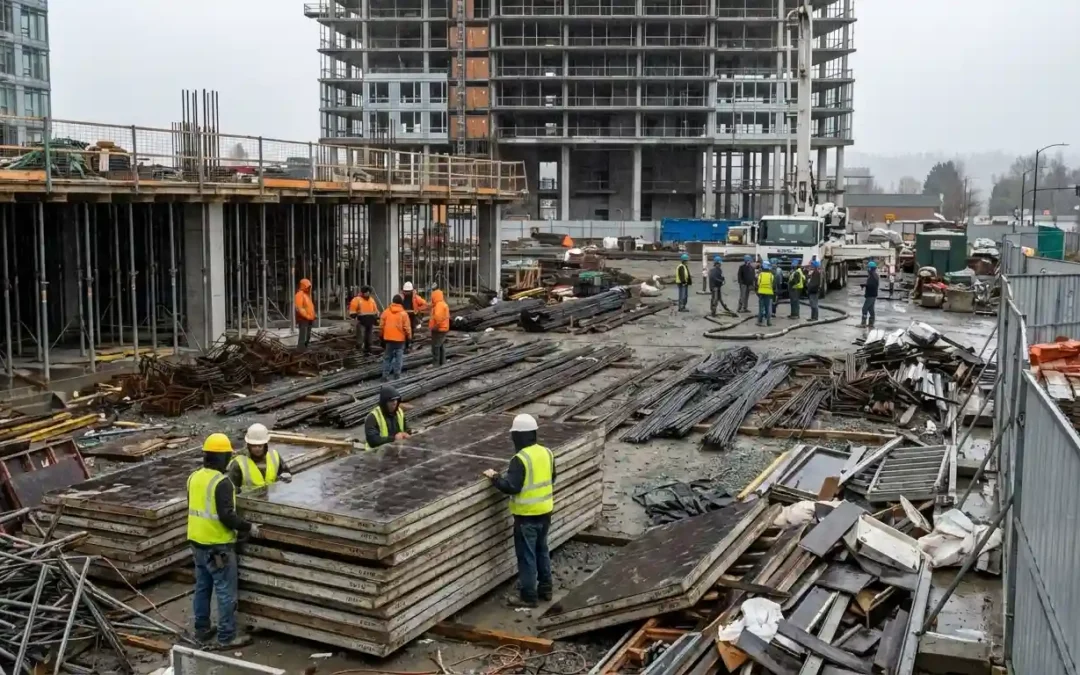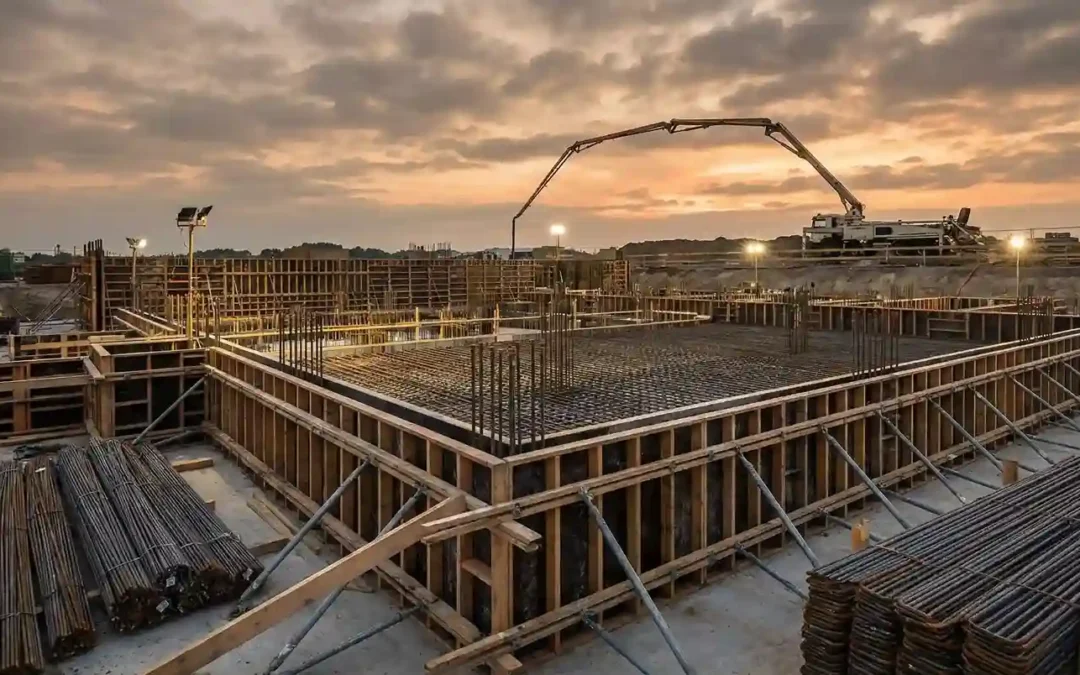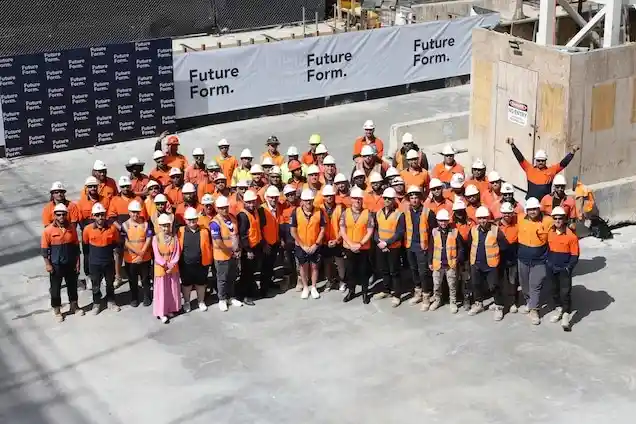
When industry experts and developers consider concrete structures, their attention turns immediately to design strength and durability. However, at the core of cost-efficiency and smooth delivery lies the effective management of the form, reo, and pour (FRP) package. The integration of these three components greatly impacts the structural performance and financial results of a project. An effectively managed FRP package reduces problems, enhances workflow, and provides developers with the confidence that they are constructing on a strong basis of both efficiency and durability.
In numerous projects, dividing formwork, steel fixing, and concreting into separate contracts leads to increased complexity, unnecessary efforts, and higher costs. Various contractors frequently work according to their individual timelines, scopes, and expectations, leading to a higher risk of mistakes and conflicts. These fragmented methods add unnecessary pressure on administration, drive up costs, and extend delivery timelines without reason. The integrated FRP package stands out as a more intelligent solution—simplifying processes, reducing unnecessary costs, and delivering improved results that benefit the interests of all parties involved in the structural package.
What is an integrated FRP package?
An integrated FRP package basically combines three crucial elements of structural concrete construction: formwork, reinforcement (reo/steel fixing), and concrete pouring. The three processes are necessary for shaping and strengthening any structure, with each one relying on the others for accuracy and durability. Viewing these elements as interconnected rather than separated tasks allows developers and professionals to truly understand the importance of integration, eventually leading to improved efficiency and reliability.
A single specialist team oversees the entire scope under an effective FRP package, removing the need for multiple suppliers for each element. This method provides an integrated structural structure, ensuring that all stages function properly under a single contract, a consistent set of timelines, and a shared goal. The advantage lies not just in reducing the administrative load but also in having faith that each stage—from the first steel fixing to the final pour—is executed perfecseamlessly with the next, resulting in a stronger and more economical outcome overall.
The power of integrated FRP package
A strong FRP package breaks down obstacles. When one contractor oversees the formwork, reinforcement, and pour, smooth coordination emerges naturally within the same team. This minimises redundant work, optimises sequencing, and guarantees structural accuracy. Developers, suppliers, and partners gain advantages from:
- Reduced overheads: A single contract brings together administration, project management, and supervision into a single integrated structure.
- Fewer errors: When a single team manages all aspects, difficulties with coordination are greatly minimised.
- Less rework: When accountability is set up, the standard of quality control improves, and mistakes are dealt with right away.
- Time savings: Effective schedules remove difficulties and minimise downtime between trades.
This collaboration not only reduces expenses but also provides trust that the concrete structure will meet expectations without unexpected issues.
Why fragmentation increases costs
Dividing FRP into various contracts might appear flexible, yet it frequently results in unexpected costs. Every contractor works within their own processes, leading to a higher chance of conflicts regarding schedules, confused responsibilities, and inconsistent quality of work. A formwork contractor may fail to coordinate with the steel fixers, resulting in placement errors. Delays in concrete pours can occur if reinforcement inspections are not conducted immediately. Conflicts could develop regarding who is held responsible for rework when cracks or mistakes become noticeable.
Each instance of miscommunication or mismatch leads to delays, extra labor, and increased project costs. The structural package shifts focus from enhancing performance to just managing damage, consuming resources that could be used more effectively for creating a more strong and reliable outcome.
The case for cost savings
Research and industry studies consistently show that insufficient coordination appears as one of the main causes of budget overruns in construction projects. By combining formwork, steel fixing, and pouring into a single structural package, projects can avoid common handovers and problems that can drain budgets. Major savings consist of:
- Labour efficiency: A single workforce minimises redundant work and maximises efficiency.
- Material waste reduction: Integrated planning effectively reduces the risks of over-ordering or improper use of steel and concrete.
- Administrative savings: A single contractor speeds up paperwork, reduces meetings, and reduces back-and-forth interactions.
- Lower risk exposure: Having insurance, safety compliance, and responsibility all bundled together simplifies management and enhances transparency.
The benefits of simple execution are clear: quicker project completions, reduced site delays, and improved reputations all lead to a strong financial case for integration.
Superior outcomes for developers and clients
Construction often presents a variety of challenges, but an increasing number of developers are switching to bundled FRP solutions to face large and demanding projects. Integrated packages integrate easily with modern techniques like lean construction and integrated project delivery, focussing on collaboration, efficiency, and minimising waste. Integrating formwork, steel fixing, and pouring into a single coordinated package allows developers to improve consistency, reduce risk, and obtain smooth results during every step of the construction process.
In high-rise projects, difficulties in the core can lead to delays for other tasks, leading to increasing costs and causing extra pressure. When an integrated FRP contractor manages the concrete core, you can expect a more dependable and consistent delivery process. This strategy protects profit margins, reduces rework, and lowers the risk of problems, all while building confidence in both developers and clients who their investment is growing successfully.
Future Form’s all-in-one advantage
Future Form leads the way in this integrated approach, providing developers and industry partners with a FRP package that combines technical expertise with successful project delivery. By managing every aspect—formwork, reinforcement, and pouring—Future Form guarantees that projects progress easily from the beginning onwards.
This approach stands out not just for its service consolidation, but for the deep understanding into the interaction of every aspect. The teams at Future Form understand the impact of steel fixing on formwork standards, the connection between the pour and reinforcement placement, and the necessary adjustments in sequencing to prevent any downtime. This insight leads to less mistakes, stronger results, and tangible savings.
A vision for the future
With the construction industry wanting to implement more intelligent, efficient, and dependable delivery methods, integrated FRP packages appear as a logical breakthrough. This means a move from separated contracts to complete, measurable techniques. This leads to reduced stress, minimised arguments, and more confidence that the structural package will be delivered on time and within the budget that was set for developers, industry professionals, and clients equally.
Future Form’s dedication to integrated FRP contracting empowers partners to chase innovative developments, free from the cost of unnecessary risks and costs. By combining form, reo, and pour, Future Form goes beyond just providing concrete structures; it offers efficiency, reliability, and long-term value.
References
Construction Industry Institute. (2020). Integrated project delivery: Principles and applications. Retrieved from https://www.construction-institute.org
Dodge Data & Analytics. (2021). The impact of rework on construction projects. Retrieved from https://www.construction.com
Lean Construction Institute. (2022). Lean construction principles for cost and efficiency. Retrieved from https://www.leanconstruction.org
McKinsey & Company. (2017). Reinventing construction: A route to higher productivity. Retrieved from https://www.mckinsey.com
Standards Australia. (2018). AS 3600: Concrete structures. Retrieved from https://www.standards.org.au





